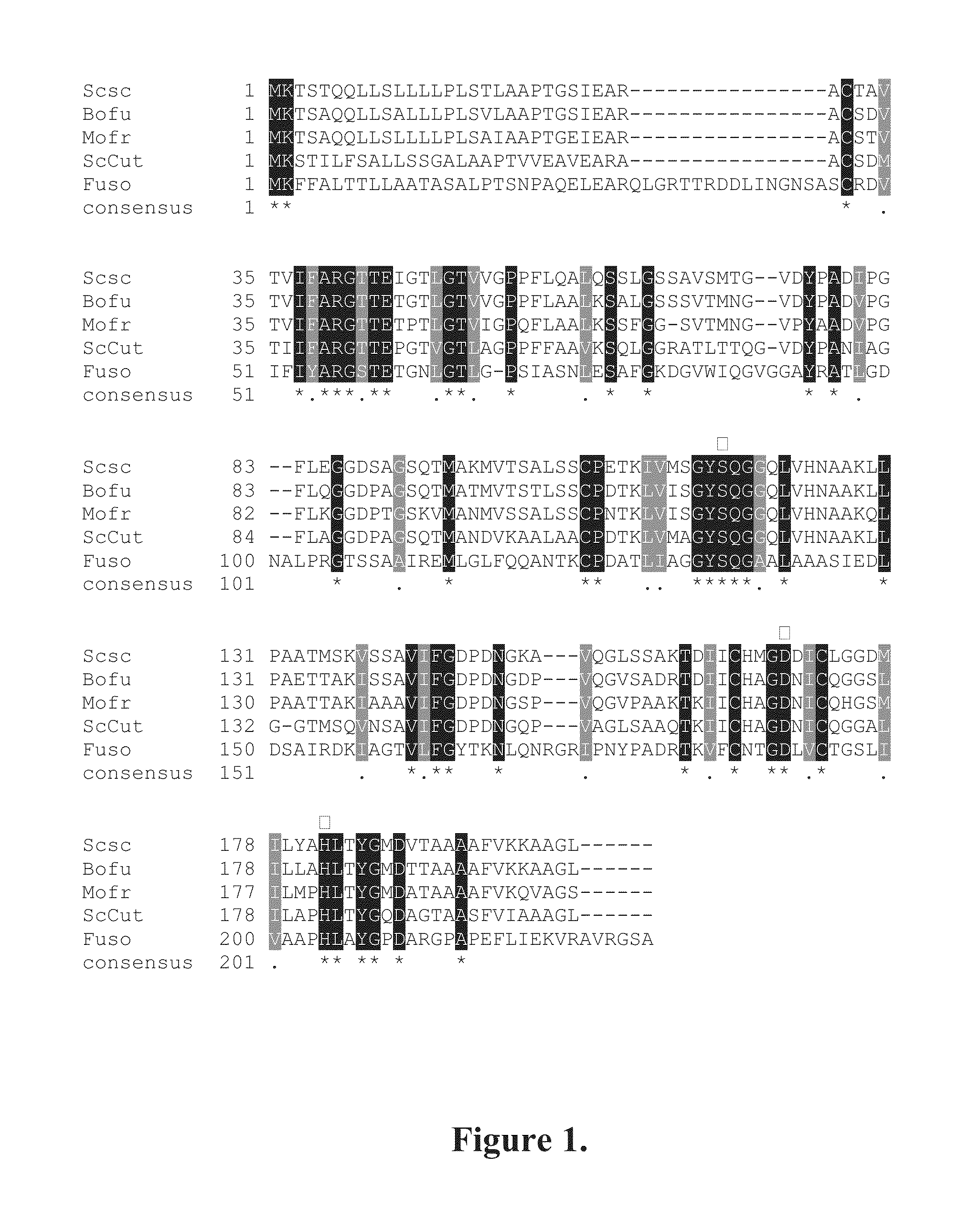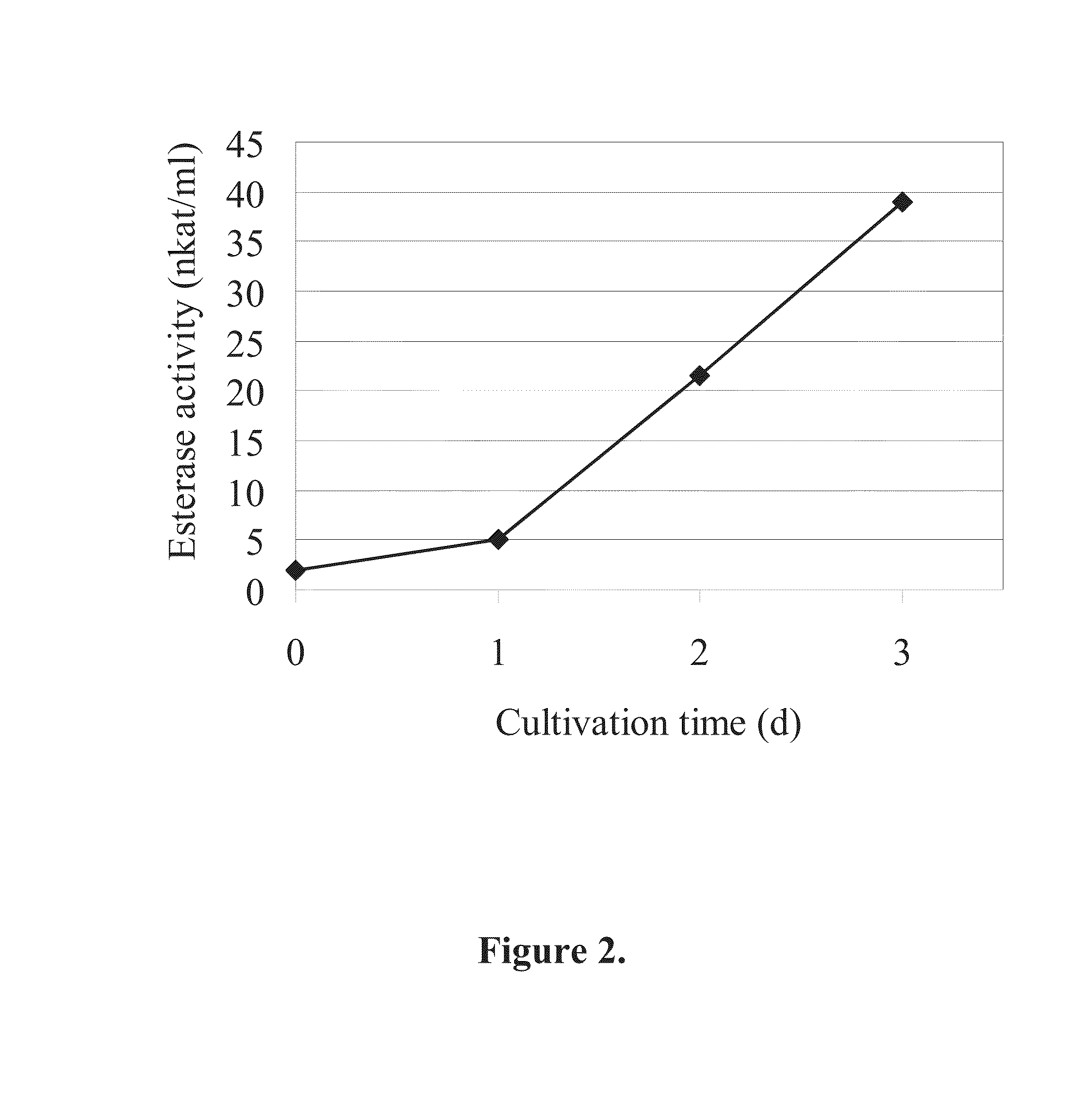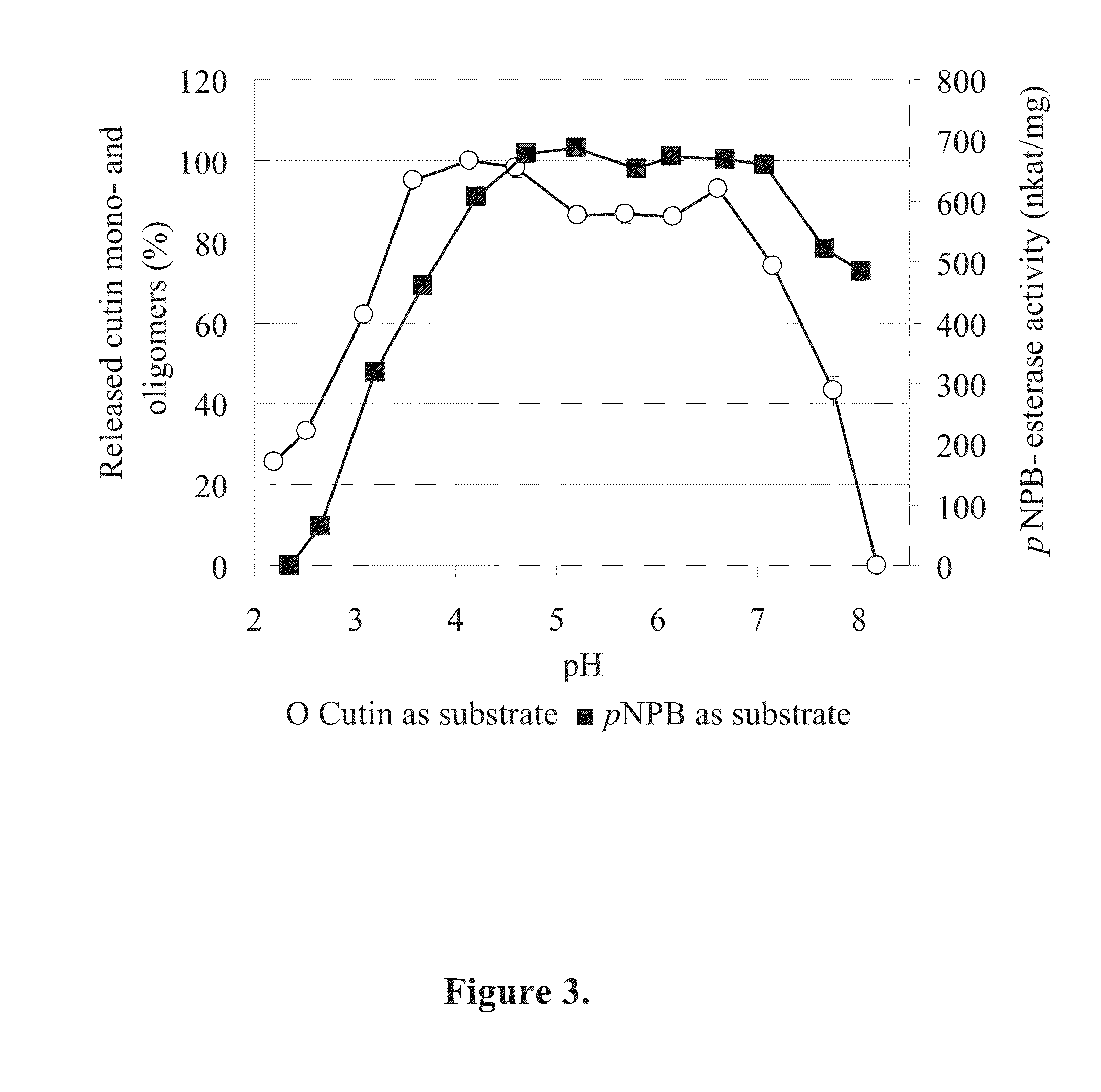Novel cutinases, their production and uses
a technology of cutinases and enzymes, applied in the field of new polypeptides, can solve the problems of affecting the industrial processing of plant materials, no data is given by the authors and no data is given on the activity of this enzym
- Summary
- Abstract
- Description
- Claims
- Application Information
AI Technical Summary
Benefits of technology
Problems solved by technology
Method used
Image
Examples
example 1
Assay Procedures
1. Cutinase Assay Using 3H-Labeled Cutin
[0064]Apple cutin was isolated as described previously by Halonen et al. (2009). The extent of cutin hydrolysis was determined using 3H-labeled cutin as the substrate by a modification of a previously described method (Davies et al., 2000). In this method the amount of radioactive hydrolysis products released into the solution from the cutin substrate are measured.
[0065]The labelled cutin (specific activity 4·106 dpm / mg) was mixed with unlabelled cutin to achieve a suitable specific activity for radioactivity measurements. 50 μl of enzyme sample was incubated in the presence of 1.2 mg 3H-cutin in a total volume of 200 μl. The reaction mixtures were buffered with McIlvaine. After incubation the reaction mixtures were centrifuged and 150 μl of the supernatants were analyzed using a scintillation counter. All samples were analyzed in duplicates and the average dpm values were calculated. Blank samples with buffer instead of the en...
example 2
Screening of Microbes for Polyester Hydrolyzing Activity
[0069]55 microbes (mostly fungal strains) from the VTT Culture Collection (Finland) were grown in the presence of suberin in Yeast Peptone or Yeast Nitrogen Base media under slightly acidic conditions and analyzed for suberinolytic activity. Degradation of suberin was analyzed by GC / MS from suberin samples withdrawn from the cultures. For analysis by GC / MS the solid samples were freeze dried. The dry samples were extracted consecutively with hexane and ethanol for lipophilic and hydrophilic compounds, respectively. The extractions were done by Dionex ASE 200 Accelerated Solvent Extraction System. The temperatures used were 90° C. for hexane extractions and 100° C. for ethanol extractions. The pressure was 100 bar in both cases and the extraction time was five minutes.
[0070]The GC-MS-instrument used for the analysis of the extracts for suberin monomers consisted of an Agilent 6890A GC and 5973N MS. The column used was a Nordion ...
example 3
Cloning and Sequencing of the Sirococcus conigenus Cutinase (ScCut) Gene
[0071]A fragment of the gene encoding the Sirococcus conigenus cutinase (ScCut) enzyme was amplified by PCR (polymerase chain reaction). Genomic DNA of S. conigenus was used as the template. The degenerate primers used were designed on the basis of sequences for fungal cutinases and cutinase-like genes obtained from the GenBank sequence database. These genes were from the fungi Aspergillus oryzae (BAA92327), Pyrenopeziza brassicae (CAB40372) and Botrytis cinerea (XP—001554721). Two different sets of primers were used: in the first set the codon usage of the fungi was not taken into account and in the second set the primers were modified to reflect the codon usage of S. conigenus (Table 1). Dynazyme EXT DNA polymerase (Finnzymes, Finland) was used in the reactions. In the touchdown PCR program used for amplification, the annealing temperature was lowered after every cycle (Table 2). (SEQ ID NO:s 4 to 11)
TABLE 1De...
PUM
| Property | Measurement | Unit |
|---|---|---|
| pH | aaaaa | aaaaa |
| pH | aaaaa | aaaaa |
| pH | aaaaa | aaaaa |
Abstract
Description
Claims
Application Information
 Login to View More
Login to View More - R&D
- Intellectual Property
- Life Sciences
- Materials
- Tech Scout
- Unparalleled Data Quality
- Higher Quality Content
- 60% Fewer Hallucinations
Browse by: Latest US Patents, China's latest patents, Technical Efficacy Thesaurus, Application Domain, Technology Topic, Popular Technical Reports.
© 2025 PatSnap. All rights reserved.Legal|Privacy policy|Modern Slavery Act Transparency Statement|Sitemap|About US| Contact US: help@patsnap.com



